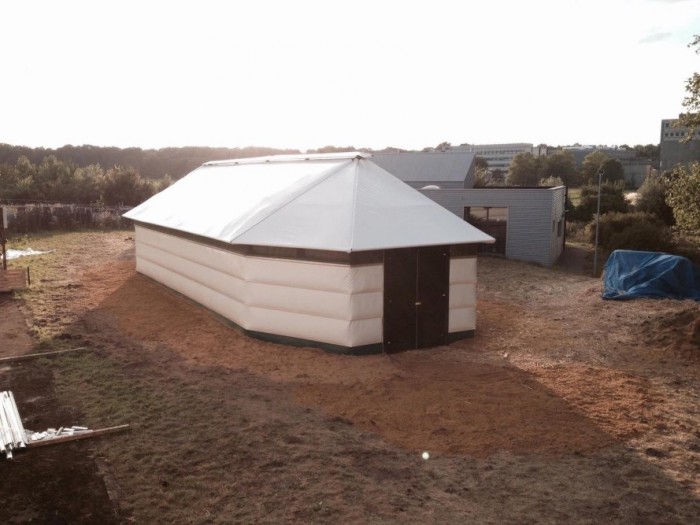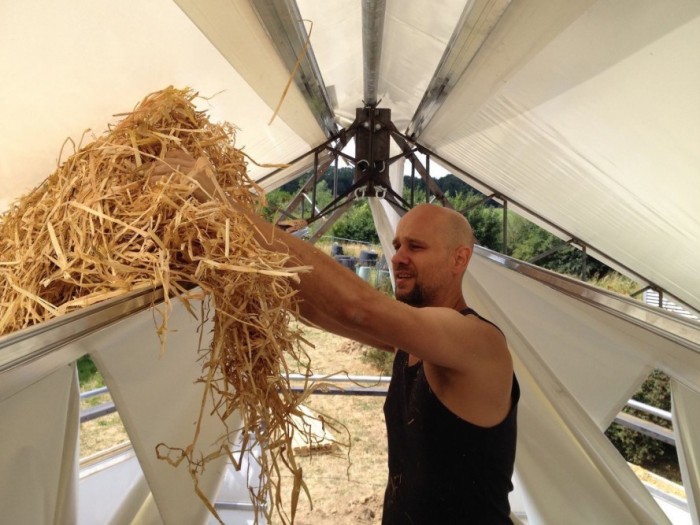The recorded 60 million refugees across the world have no other choice but to flee their homes, seeking asylum and shelter in host countries. Belgian-based design firm DMOA designed Maggie Shelter in response to the poor living conditions that these displaced immigrants encounter in camps and other informal settlements.
Maggie Shelter is a temporary but sturdy insulated structure that can be built in one day and remain intact for 15 years. DMOA based the shelter’s design on a set of criteria that considers safety, durability, comfort, hygiene, adaptability and practicality for the user. This serves to usher in a new type of temporary shelter that feels less like a tent and more like a home. A series of the modular structures can be set up to create communities with schools, medical units, warehouses and meeting spaces.
Built for comfort, the shelter is 100 per cent waterproof and includes insulation to regulate interior temperatures. For safety purposes, the aluminium structure can withstand a 50-kilogram load of snow, strong winds, fire and storms. From a hygiene perspective, anti-insect fabric covers ventilation points to keep mosquitos and rodents from entering, and specially made textiles are included to block out the dust. The entire structure is made up of a canvas shell with a hollow roof and inner walls that can be packed with low-cost and locally available materials such as sand, grass, or waste.
By improving temporary settlement standards, DMOA’s Maggie Shelter meets the needs of displaced people and offers them hope for the future.
Read more on creative responses to the refugee crisis:
Swedish clinic designed with the country's refugee population in mind
How do you tackle piracy, the refugee crisis and learning new language using design?
Mexican students design a carpet for growing crops in refugee camps







